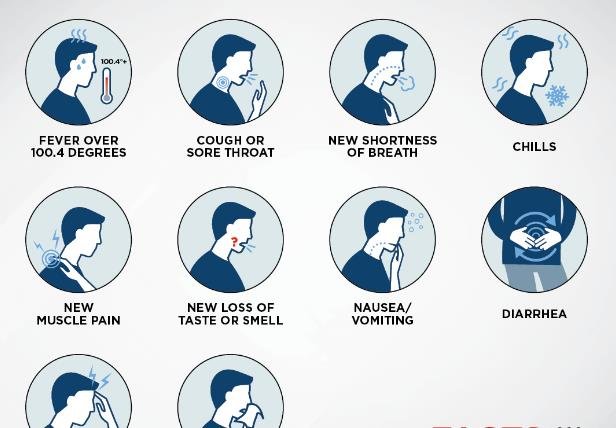The coronavirus pandemic has been raging for more than two years, and new variants and strains have emerged over time. Some of these variants, such as Omicron and Arcturus, have been more transmissible and infectious than the original strain. As a result, the symptoms of COVID-19 have also changed and evolved, making it harder to identify and diagnose the disease. Here are some of the most current COVID symptoms in 2023, according to doctors and experts.
Fever is still a common sign of COVID-19
One of the most consistent and common symptoms of COVID-19 is fever, which is defined as a body temperature above 38°C or 100.4°F. Fever is a sign that the body is fighting off an infection, and it can also cause other symptoms such as chills, headache, fatigue, and muscle aches. Fever can be measured using a thermometer, either orally, under the arm, or in the ear. However, some people may have COVID-19 without developing a fever, especially if they are vaccinated or have a mild case.

Cough and sore throat are more prevalent with Omicron
Another common symptom of COVID-19 is cough, which can be either dry or productive. Coughing is a reflex that helps clear the airways of mucus and irritants. However, coughing can also damage the lining of the throat and lungs, causing inflammation and pain. Sore throat is a symptom that often accompanies coughing, as well as other respiratory infections. Sore throat can make it difficult to swallow, speak, or breathe.
According to a study by Imperial College London, cough and sore throat are more prevalent with Omicron than with previous variants of COVID-19. The study analyzed data from more than 200,000 people who reported their symptoms using a smartphone app. The researchers found that Omicron was associated with a higher risk of cough (odds ratio 1.29) and sore throat (odds ratio 1.53) compared to Delta. However, Omicron was also associated with a lower risk of loss of smell (odds ratio 0.28) and shortness of breath (odds ratio 0.66) compared to Delta.
Conjunctivitis and pinkeye are linked to Arcturus
Conjunctivitis, also known as pinkeye, is an inflammation of the conjunctiva, which is the thin membrane that covers the white part of the eye and the inner surface of the eyelids. Conjunctivitis can cause redness, itching, burning, tearing, discharge, and sensitivity to light. Conjunctivitis can be caused by various factors, such as allergies, bacteria, viruses, or chemicals.
According to Dr Vipin Vashishtha, a paediatrician and former head of the Indian Academy of Pediatrics Committee on Immunisation, conjunctivitis is one of the symptoms of Arcturus, a new sub-variant of Omicron that has been detected in 34 countries so far. Arcturus is also known as Omicron subvariant XBB.1.16, and it was first identified in January 2023. The World Health Organization (WHO) has classified Arcturus as a variant of interest since mid-April 2023. Dr Vashishtha said that Arcturus’s symptoms include a high fever, a cough and “itchy” conjunctivitis or pinkeye.
Other possible symptoms of COVID-19
Besides fever, cough, sore throat, and conjunctivitis, there are other possible symptoms of COVID-19 that may vary depending on the variant, the severity of the infection, and the individual’s immune system. Some of these symptoms include:
- Runny nose
- Sneezing
- Loss of smell or taste
- Headache
- Fatigue
- Diarrhea
- Nausea or vomiting
- Chest pain or pressure
- Difficulty breathing
- Confusion or delirium
- Skin rash or discoloration
- Blood clots or strokes
What to do if you have symptoms of COVID-19
If you have any symptoms of COVID-19, you should stay home and isolate yourself from others as much as possible. You should also contact your health care provider or local health authority for advice on testing and treatment. You may be eligible for a rapid antigen test or a PCR test to confirm your diagnosis.
If you have mild symptoms, you may be able to manage them at home with over-the-counter medications such as paracetamol or ibuprofen for fever and pain relief. You should also drink plenty of fluids and rest as much as possible.
If you have severe symptoms or underlying health conditions that put you at a higher risk of complications, you may need to seek medical attention or go to the hospital. You may be given oxygen therapy, steroids, antivirals, or monoclonal antibodies to help you breathe and fight the virus. You may also be enrolled in clinical trials for new treatments or vaccines.
The best way to prevent COVID-19 is to get vaccinated and follow the public health measures such as wearing a mask, washing your hands, keeping a physical distance, and avoiding crowded and poorly ventilated spaces. You should also monitor your symptoms and get tested regularly if you are exposed to someone who has COVID-19 or if you travel to a high-risk area.
